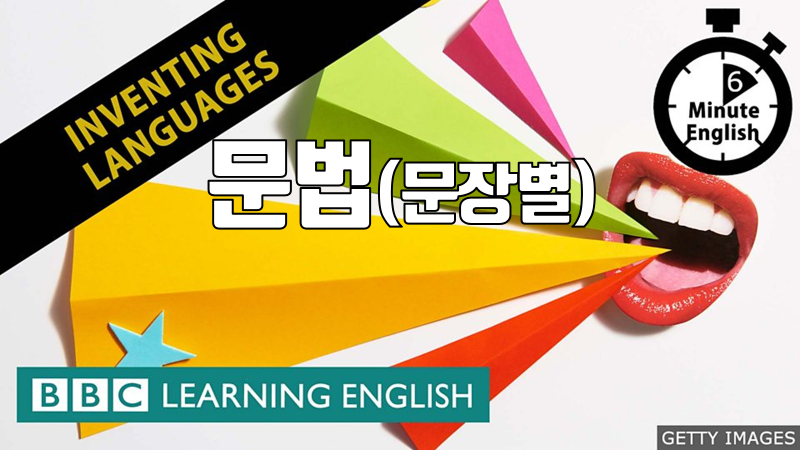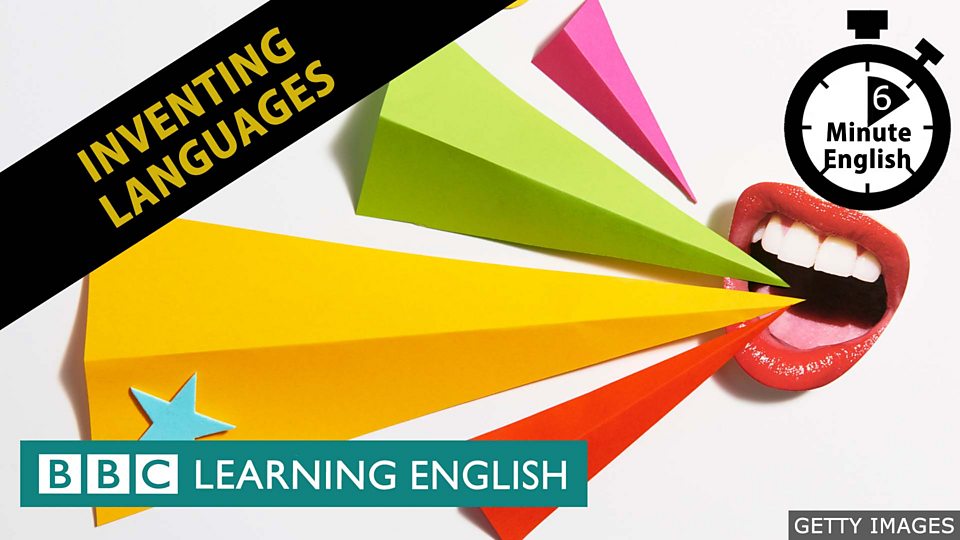
이번주 BBC Learning English - 6 Minute English가 다룬 문법 관련 이슈 는 관계대명사(13), 접속사(12), 분사(6), 부정사(4), 전치사(3), 시제(2), 문장 형식(2) 등이였습니다. 그 외에 부사, 구문(句文), 문장 부호, it 등이 각각 1 건씩 다루어졌습니다.
[본문] [10] My bad!
[설명] my bad '내 잘못이다'
[본문] [11] Sam is speaking English, just a very modern type of English, for example saying 'my bad', instead of 'my fault' as a way of accepting that she's wrong.
[설명] 「saying ~」은 이유를 나타내는 분사구문 입니다.
[본문] [12] Or adding 'not' at the end of a sentence to show I really mean the opposite of what I said.
[설명] ⑴ 「adding ~」은 이유 또는 원인을 나타내는 분사구문입니다.
⑵ 『what I said』는 what 주격 관계대명사절입니다. 절의 문장성분은 전치사 'of'의 목적어입니다.
⑶ 앞의 문장과 연결하여 말하는 문장입니다.
[본문] [13] Both are examples of small changes in English which have happened naturally over the last decade or two.
[설명] ⑴ 『which have happened ~』는 which 관계대명사의 계속적 용법으로 격은 주격입니다. 선행사는 English입니다.
⑵ 「have happened」는 현재완료 시제입니다. 현재까지의 '계속되는 상황'을 나타냅니다.
[본문] [14] Changes like these happen because, unlike say, Latin, which no-one speaks day-to-day, English is a living language - a language people speak and use in their ordinary lives.
Changes like these happen because, unlike say, Latin, which no-one speaks day-to-day, English is a living language - a language {which/that} people speak and use in their ordinary lives.
[설명] ⑴ 「like these」는 전치사명사구로 형용사 기능을 합니다. Changes를 후위 수식합니다.
⑵ 『which no-one speaks day-to-day』의 which는 선행사에 추가 정보를 제공하는 비제한적 용법의 관계대명사입니다. 선행사는 Latin입니다. 비제한적용법은 쉽표로 둘러싼 삽입절의 형태를 갖습니다.
⑶ 선행사 'a language' 뒤에 목적격 관계대명사 which 또는 that이 생략되어 있습니다.
⑷ day-to-day 그날그날의
[참조 링크]☞ 비제한적 용법의 관계사(관계대명사, 관계부사) 용법 실전 예문 - BBC Learning English
☞ 문장 구조 분석 코너 참조 바랍니다.
[본문] [15] New bits of English are invented as people use the language in new ways, but what happens when a language comes from an entirely different galaxy - somewhere like Qo'noS, home planet of the Klingons?
[설명] ⑴ but 접속사로 두 개의 등위문이 연결되어 있습니다.
⑵ 『as people use ~』 접속사 as는 이유, 원인을 나타내는 종속절을 인도합니다.
⑶ 『when a language comes from ~』의 접속사 when은 조건의 의미를 갖는 종속절(부사절)을 이끌고 있습니다.
⑷ 대시(줄표)는 동격 관계를 나타냅니다. 「galaxy」와 「somewhere」는 동격입니다. 대시가 '(관계)대명사+be동사'의 기능을 합니다.
[본문] [16] Yes, when sci-fi TV show, Star Trek, introduced alien characters called Klingons, the makers needed to invent a whole new language - Klingon.
[설명] ⑴ 「called ~」는 과거분사로 'alien characters'를 후위수식합니다. 분사 앞에 '주격관계대명사와 be 동사'가 생략되어 있다고 생각할 수 있습니다.
⑵ 『needed to invent』는 「동사+to부정사」 구문으로 (to)부정사는 명사적 용법으로 사용되어 목적어가 됩니다.
[본문] [17] Entirely made-up and unrelated to any human language, Klingon has developed a life of its own.
[설명] 『has developed ~』는 현재완료 시제입니다. 현재까지의 '계속되는 상황'을 나타냅니다.
[참조 링크]☞ 관계대명사 계속적용법 총정리 which 생략 접속사+대명사 and but for though
[본문] [22] Hmmm, every language needs vocabulary, so I'll say a) Klingon was the first invented language to have its own dictionary.
Hmmm, every language needs vocabulary, so I'll say {that} a) Klingon was the first invented language to have its own dictionary.
[설명] ⑴ 「I'll say」 뒤에 명사절을 이끄는 접속사 that이 생략되었습니다.
⑵ So는 상대방의 반응을 보거나 대답하면서 '그래서', '그렇다면' 정도의 의미로 문장을 연결하는 등위 접속사입니다.
⑶ 『to have its own dictionary』은 to부정사 형용사적 용법으로 language를 후위 수식합니다.
[본문] [24] Klingon isn't the only made-up language invented for the movies.
[설명] 「invented」는 과거분사로 language를 후위수식합니다. 분사 앞에 '주격관계대명사와 be 동사'가 생략되어 있다고 생각할 수 있습니다.
[본문] [25] David Peterson is the creator of Dothraki, a language used in the fantasy TV show, Game of Thrones.
[설명] ⑴ 「used ~는 과거분사로 language를 후위수식합니다. 분사 앞에 '주격관계대명사와 be 동사'가 생략되어 있다고 생각할 수 있습니다.
⑵ 「Dothraki」와 「a language」 및 「the fantasy TV show」와 「Game of Thrones」가 동격입니다. 콤마가 동격을 나타냅니다.
[본문] [27] They discussed Saint Hildegard who created the very first made-up language in the 12th century:
[설명] 『who created the very ~』의 who는 제한적용법 주격의 관계대명사입니다. 선행사는 Hildegard입니다.
[본문] [28] What she had was an entire list of nouns, a whole list of nouns - many of them godly, many of them not, and she would drop them into songs using Latin grammar and other Latin words, so it's not a language proper in the way that we understand it now, because really when we talk about a language it's not just the vocabulary, it's the grammar - nevertheless we still kind of look on her as the patron saint of modern conlanging.
[설명] ⑴ 『that we understand it now』 절은 동격절로, way와 동격입니다.
⑵ patron saint '수호성인'
⑶ look on as '~을 ~라고 보다[여기다], .…라고 간주하다'
☞ 문장 구조 분석 코너 참조 바랍니다.
[본문] [29] Saint Hildegard invented new nouns but used Latin grammar, so David doesn't think her invention is a proper language.
Saint Hildegard invented new nouns but used Latin grammar, so David doesn't think {that} her invention is a proper language.
[설명] 「David doesn't think」 뒤에 명사절을 이끄는 접속사 that이 생략되었습니다.
[본문] [30] Nevertheless, Saint Hildegard is considered the patron saint of languages.
[설명] 『Nevertheless, Saint Hildegard is ~』의 nevertheless는 부사어구(접속부사)입니다. '그렇기는 하지만, 그럼에도 불구하고'의 뜻을 갖습니다.}
[본문] [31] The patron saint of something refers to a Christian saint who is believed to give special help to a particular activity.
[설명] 『who is believed to ~』의 who는 제한적용법 주격의 관계대명사입니다. 선행사는 'a Christian saint'입니다.
[본문] [32] Here, the activity is inventing a conlang, short for constructed language - artificially invented languages, like Klingon and Dothraki.
Here, the activity is inventing a conlang, {which is} short for constructed language - artificially invented languages, like Klingon and Dothraki.
[설명] 'short for'의 앞에 주격관계대명사와 be동사 "which is"가 생략되었습니다.
[본문] [34] He wanted to make it easier for people who spoke different languages to communicate with each other.
[설명] ⑴ 『wanted to make 』은 「동사(want)+to부정사」 구문으로 (to)부정사는 명사적 용법으로 사용되어 목적어가 됩니다.
⑵ 『to make it easier ~』 to부정사구는 make 5형식 구문입니다. 목적어가 it, 목적격보어가 easier입니다.
⑶ 'it to 가목적어' 구문입니다. 진목적어는 「to communicate with each other」입니다.
⑷ 『who spoke different languages』의 who는 제한적용법 주격의 관계대명사입니다. 선행사는 people입니다.
⑸ (to)부정사 『to communicate with each other』의 의미상주어는 people입니다.
[참조 링크]☞ to 부정사 의미상주어
[본문] [35] Listen as David Peterson speaks Esperanto with Michael Rosen and tests how much he understands for BBC Radio 4 programme, Word of Mouth:
Listen as David Peterson ①speaks Esperanto with Michael Rosen and ②tests how much he understands for BBC Radio 4 programme, Word of Mouth:
[설명] 『as David Peterson ~』의 as는 that과 같이 명사절을 인도합니다. 문장성분은 목적어입니다.
[본문] [43] Er, no I got stuck on that one!
[설명] get stuck on '(너무 어렵기 때문에 하던 것을) 계속'완성]할 수 업다'
[본문] [47] Michael gets stuck on that one - he can't answer because it's too difficult.
[설명] get stuck on '(너무 어렵기 때문에 하던 것을) 계속'완성]할 수 업다'
[본문] [48] I think I'd probably get stuck on that as well.
I think {that} I'd probably get stuck on that as well.
[설명] 「I think」 뒤에 명사절을 이끄는 접속사 that이 생략되었습니다.
[본문] [50] And speaking of creatures from outer space, did I get the right answer to your quiz question, Sam?
[설명] 『speaking ~』은 이유 또는 조건을 나타내는 분사구문입니다.
[본문] [52] I guessed it was the first invented language to have its own dictionary.
I guessed {that} it was the first invented language to have its own dictionary.
[설명] 「I guessed」 뒤에 명사절을 이끄는 접속사 that이 생략되었습니다.
[본문] [53] Which was… the wrong answer, I'm afraid.
[설명] which가 앞의 문장의 내용을 선행사로 받는 계속적 용법의 관계대명사 기능을 합니다. '그리고 그것은'의 의미를 갖습니다.}
[본문] [55] The story must have been hard to follow but I'm sure the singing was out of this world!
The story must have been hard to follow but I'm sure {that} the singing was out of this world!
[설명] 「I'm sure」 뒤에 명사절을 이끄는 접속사 that이 생략되었습니다.
[본문] [59] A living language, like English, is a language that people still speak and use in their ordinary lives.
[설명] ⑴ 『like English』는 전치사명사구로 형용사 기능을 합니다. language를 후위 수식합니다.
⑵ 『that people still speak ~』의 that은 관계대명사 입니다. 격은 목적격이고, 선행사는 language입니다. 제한적 용법입니다.
[본문] [60] The phrase, my bad, originated in the United States but is also used in Britain as an informal way to say, 'my fault' or to tell someone that you've made a mistake.
[설명] ⑴ 『to tell someone ~』의 tell은 4형식 문장을 구성합니다. 간접목적어는 someone, 직접목적어는 that 명사절입닏.
⑵ 『that you've made ~』 절은 접속사 that이 이끄는 명사절입니다. 절의 문장성분은 직접 목적어입니다.'
[참조 링크]☞ 명사절 that 2 (보어로 쓰이는 that절)
[본문] [64] That's all the time we have for this programme about invented languages.
That's all the time {which/that} we have for this programme about invented languages.
[설명] 선행사 time 뒤에 목적격 관계대명사 which 또는 that이 생략되어 있습니다.
이 블로그에는 [BBC 6분 영어와 관련하여 매주 다음과 같은 글들이 게시 됩니다
- 단어공부(금주 대본에 나온 주요 어휘) https://softca.tistory.com/1319
- 멀티단어공부(금주 대본에 사용된 멀티단어(구동사, 숙어) 간단 정리) https://softca.tistory.com/1320
- 독해공부(금주 대본의 문장별 해석(직역) 자료) https://softca.tistory.com/1321
- 문장별 문법공부(문장별 문법 설명) 이 글입니다
- 금주의 어휘(금주 대본에 나온 금주의 어휘를 집중적으로 정리한 자료) 이 글의 포스팅 시점에는 아직 작성되지 않았습니다.
- 항목별 문법공부(금주 대본에 나온 문법을 주제별/항목별로 정리한 자료) 이 글의 포스팅 시점에는 아직 작성되지 않았습니다.
- 금주의 구동사(금주 대본에 사용된 구동사 상세 정리) 이 글의 포스팅 시점에는 아직 작성되지 않았습니다.
아래의 이미지를 클릭하시면 PDF로 된 대본(Script)를 다운받을 수 있습니다.
[영어 문장 공부] 자료를 처음 보시는 분은 아래의 링크를 클릭하셔서 「공부법」을 먼저 보시기를 권장 드립니다.
[영어문장공부] 학습법 보기
'BBC 6분영어' 카테고리의 다른 글
| BBC Learning English 문법 강좌(항목별) - Inventing languages [BBC 6분 영어] (0) | 2022.01.17 |
|---|---|
| [BBC 영어] 6 Minute English, 금주의 어휘 - Inventing languages (0) | 2022.01.17 |
| [영어독해공부] Inventing languages - 영국 BBC 6분 영어 강좌 (0) | 2022.01.17 |
| [영어숙어 및 구동사] 6 Minute English - Inventing languages [BBC Learning English 강좌] (0) | 2022.01.17 |
| 6 Minute English 영어단어공부 - Inventing languages [BBC Learning English 강좌] (0) | 2022.01.17 |





